
When the crisp, cool days of autumn transform the garden into a fiesta of color, no shrub parties harder than fothergilla. In response to October’s increasingly frosty nights and shorter days, its matte blue-green foliage breaks out in jubilant tones of purple, gold, orange, and crimson, eventually culminating in an orange-red glow.
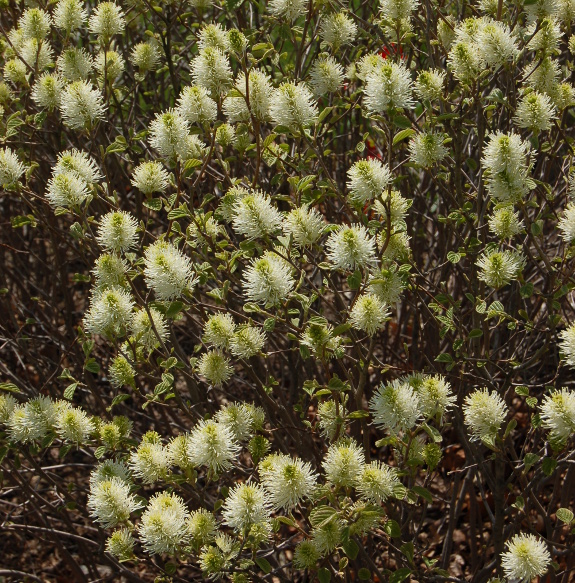
Fothergilla is no slouch in the flower department, either, although it blooms with big hitters like lilacs, flowering dogwoods, crabapples, azaleas, and wisterias and tends to get lost amidst the frenzy of high spring. The clover-like blossoms, perched atop slightly zigzagged stems, emerge greenish yellow, becoming white as they expand.
The nontraditional flowers feature male stamens and anthers instead of petals as the main attraction, though they’re certainly not lacking in charm. When backlit by the sun, the translucent blossoms capture the sunlight and channel it out through each threadlike stamen. On warm days the blooms give off the faint, sweet, sharp scent of honey.
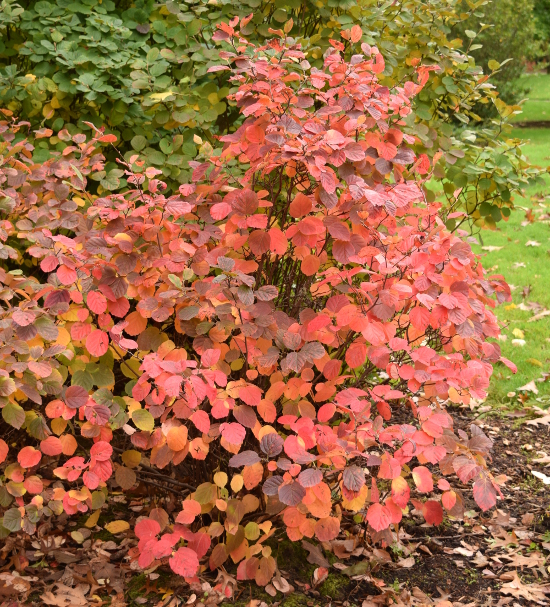
Fothergilla is an American genus consisting of two species, F. gardenii and F. major, both native to the southeastern U.S. Fothergilla gardenii, the smaller of the two, reaches 3 to 6 ft. in height and is found at the margins of swampy sites from Alabama to North Carolina and south to North Florida.
The first to document Fothergilla gardenii, in 1765, was Dr. Alexander Garden, a Scottish physician who had moved to Charleston, South Carolina several years earlier to not only practice medicine but to indulge his passions for botany and zoology as well. Imagine what it must have been like for a plant enthusiast to step into a New World so rich in botanical wonders and ripe for discoveries!

Garden spent 30 years botanizing, raising a family, and treating patients in the Colonies, but then his welcome abruptly expired. A British Loyalist who refused to surrender his allegiance to the Crown throughout the American Revolution, he was forced to give up his property in 1782 and was sent packing. He returned to the U.K. Much to his chagrin, his son Alexander joined the American Army, though his service did allow the younger Alexander to reclaim the Garden family property.

Hence the specific epithet, gardenii—a nod to Alexander Garden, the first Westerner to describe the new plant. Perhaps Garden would have had the genus named after him, had he not already lent his name to Gardenia, an Asian genus that had been cultivated for a thousand years in its native lands before any Westerner had ever inhaled its heady perfume, and which Garden really had no role in discovering or documenting. But hey, it’s who you know that matters, and Garden had plant nerd friends in high places.
Garden suggested to the great Swedish botanist and plant namer, Carolus Linnaeus, that the yet-to-be-named plant be placed in a new genus called Anemelis. Linnaeus believed instead that it should be lumped in with the witch hazels (Hamamelis), and the argument went on via long-distance correspondance for eight years before Linnaeaus finally conceded.
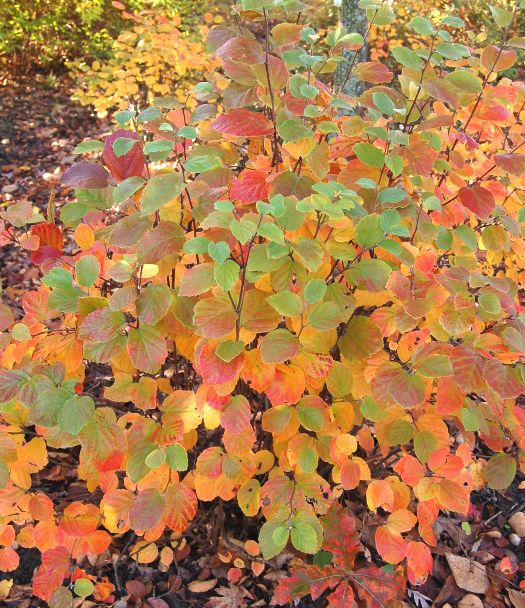
The genus name Fothergilla was eventually chosen by a student of Linnaeus to honor Dr. John Fothergill. Fothergill was an 18th Century English physician and proponent of the hot new topic in medicine in 1745: mouth-to-mouth resuscitation. He was also an avid gardener and patron of William Bartram, who with his father John Bartram was a celebrated plant explorer in America.
The Bartrams are probably best known for discovering (in the same year that Alexander Garden discovered Fothergilla gardenii) a finicky but exquisite little tree that they named Franklinia after their good friend, Benjamin Franklin. When William returned later to the same grove of trees in Georgia to collect seed, it would be the last time anyone would ever see the franklinia tree in the wild again. Because he grabbed some seed, the tree lives on in gardens around the world.
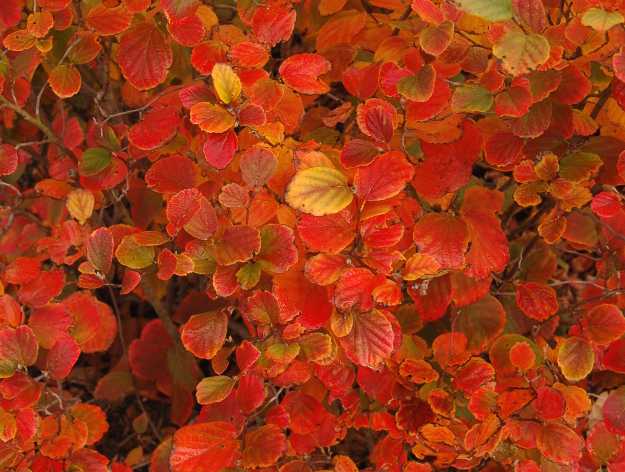
Large fothergilla, Fothergilla major, is a southeastern mountain species that is usually bigger than F. gardenii and can reportedly reach 18 ft. in its native haunts. Eight feet is more typical in garden life. Fothergilla major can handle drier conditions than F. gardenii and is a zone hardier, too (to zone 4).
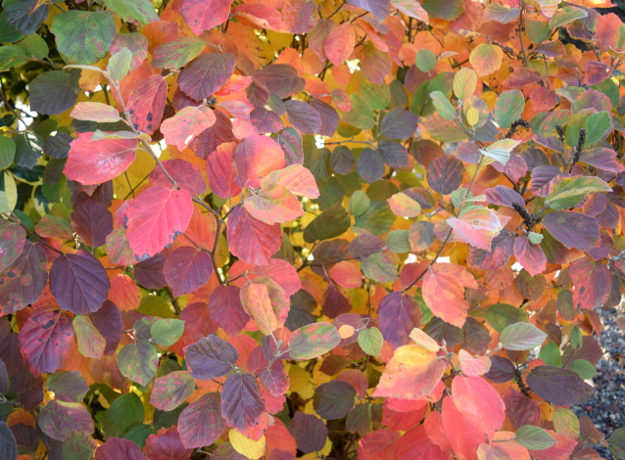
Both species prefer acid soil that is moist, well drained, and rich in organic matter. Full sun will enable the heaviest flowering and the richest fall color, but too much sun in hot climates may stress the plant and cause the leaves to scorch (especially if a watering or two is missed), so morning sun with afternoon shade is often ideal. Fall color in shade can be a delightfully subdued, rainbow-sherbet mix of colors.
There are several named clones of fothergilla available to gardeners, but just a few of them dominate the catalog pages.
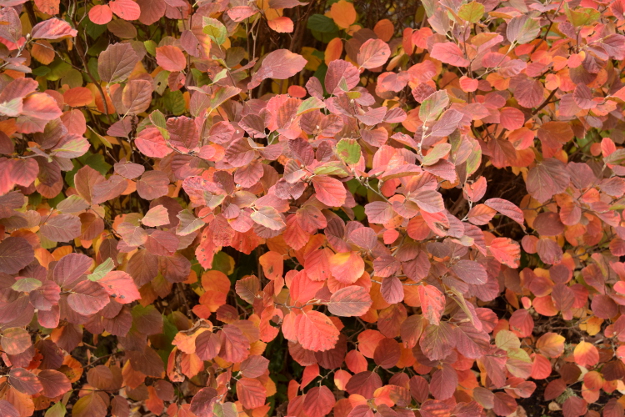
‘Mt. Airy’, which Michael Dirr selected at Mt. Airy Arboretum in Cincinnati, makes a glorious 6-ft. mound of kaleidoscopic fall foliage. It was thought to be a hybrid between F. gardenii and F. major, but it may be simply a selection of F. major. It has a suckering habit and is easy to propagate from cuttings.


A sport of ‘Mt. Airy’, ‘Blue Shadow’ is a 21st Century introduction with icy blue leaves as frosty as those of the bluest hosta. They turn spectacularly rich sunset shades in fall. If I could only have one fothergilla, this would probably be it.

In the Pacific Northwest, the petite F. gardenii ‘Jane Platt’, from the collection of the late beloved Portland gardener by the same name is a favorite. It is reported to not color up well in warmer climates, but is a standout here.
Do you grow any of these fothergillas? Do you grow any other selections? Are they the life of the party in your fall garden?

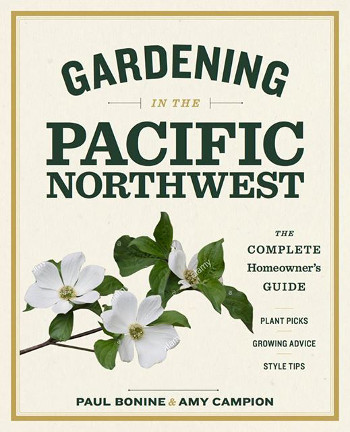























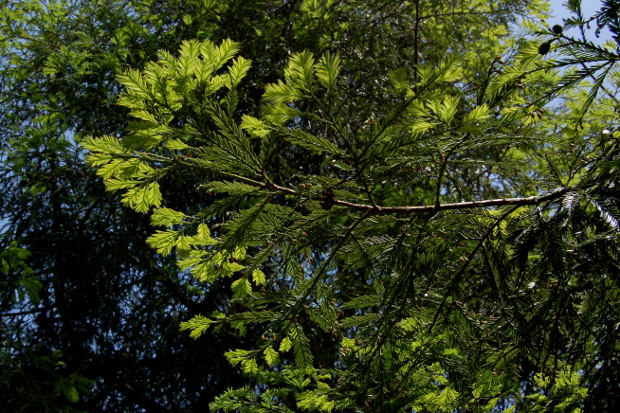


Blue shadow has never colored well in my landscapes
Hmmm… that’s interesting. It seems to color very well in a container.
A younger F. ‘Mt Airy’ is the star of my front garden right now. Can’t wait for it to get more stature!
Wish that fothergilla was a faster grower. It’s pretty slow.
Still very little color showing on my ‘Blue Mist’.
(update) Yay! All the trash talking I’ve been doing has paid off…finally a little color is appearing…if you look close)
I went to Edgefield today and no color whatsoever on their fothergillas. It actually is pretty early still.
Amy, thank you so much for the informative and detailed article. I never knew that Fothergilla produced such a varied and brilliant fall display!
They’re not always quite this colorful, but when conditions are right, they’re spectacular!
I have two fothergilla. They’re both to supposed to be a blue cultivar but one is green. But they’re both gorgeous so who cares!
It’s hard to go wrong with these I think!
One of the bargains I brought home from a Cistus ‘Tough Love Sale’ has proven to be a Fothergilla, but which one (?) I haven’t a clue. I’ve been eyeing ‘Mt Airy’ on the tables at Joy Creek. They have grown quite a bit since I started there in May so I would guess that they would go to town if liberated from their pots. Have you had personal experience to make you say it’s a slow grower?
I grew it in Kentucky, and it was slow. I haven’t grown it here in the PNW yet.
Hi there,I log on to your blog named “Fothergilla Fiesta | The World’s Best Gardening Blog” daily.Your humoristic style is witty, keep it up! And you can look our website about proxy list.